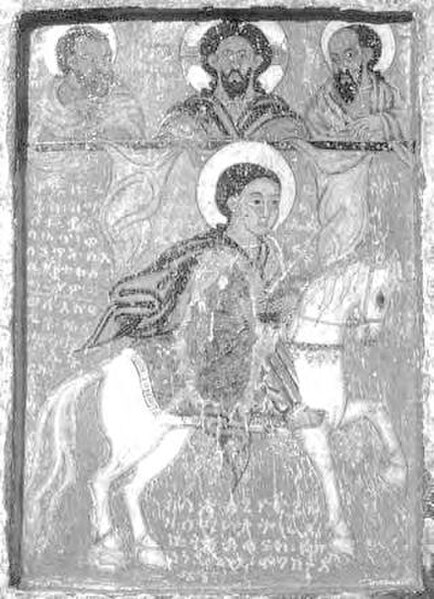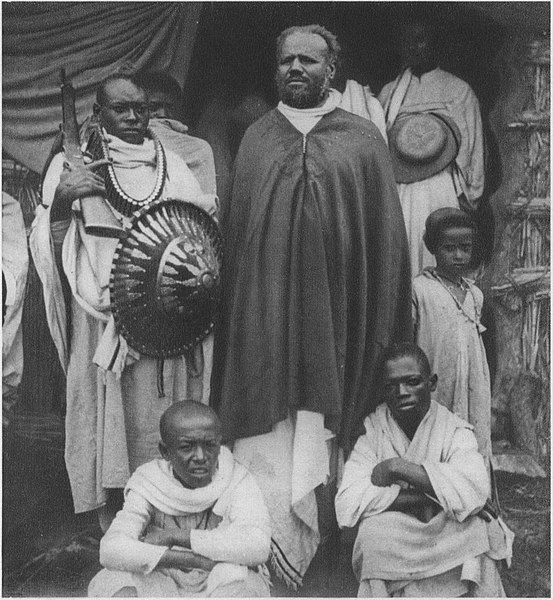Habesha peoples is an ethnic or pan-ethnic identifier that has been historically employed to refer to Semitic-speaking and predominantly Oriental Orthodox Christian peoples found in the highlands of Ethiopia and Eritrea between Asmara and Addis Ababa and this usage remains common today. The term is also used in varying degrees of inclusion and exclusion of other groups.
Ancient stone slabs with Sabaean inscriptions found at Yeha, Ethiopia.
Approximate realm of the ancient Kingdom of Dʿmt.
Emperor Yohannes IV with his son and heir, Ras Araya Selassie Yohannes.
Fasilides' Castle in Gondar, Amhara Region.
Amharas are a Semitic-speaking ethnic group which is indigenous to Ethiopia, traditionally inhabiting parts of the northwest Highlands of Ethiopia, particularly inhabiting the Amhara Region. According to the 2007 national census, Amharas numbered 19,867,817 individuals, comprising 26.9% of Ethiopia's population, and they are mostly Oriental Orthodox Christian.
A group of young men in Bahir Dar
Amda Seyon I depicted on a 15th century manuscript. According to British historian Edward Ullendorff, "Amda Seyon was one of the most outstanding Ethiopian kings of any age and a singular figure dominating the Horn of Africa in the fourteenth century."
A portrait of Tewodros II from the German-born missionary, Johann Martin Flad, who was one of the European prisoners at Magdala
1921 photo captioned "Amhara head of the guard of the Negus."








